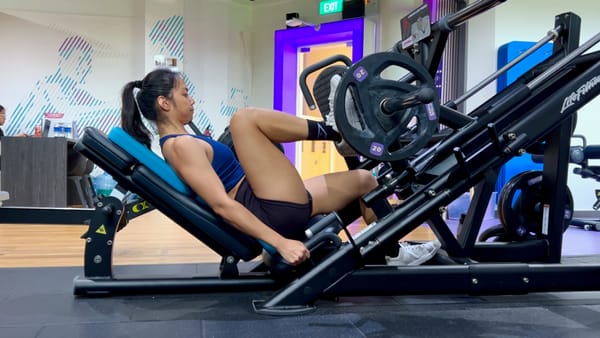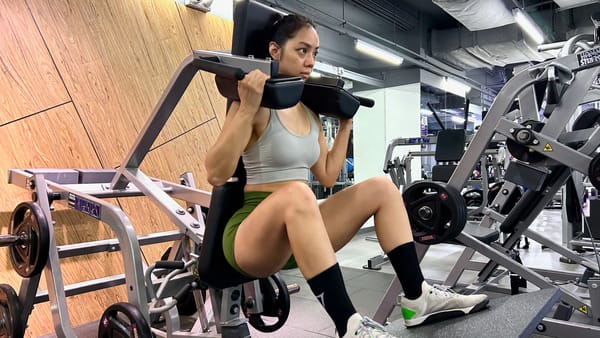Leg Extension vs Squat: Which Is Better for Training Quads?
Thinking if leg extension vs squat is yet another silly exercise comparison? Stop, because one's indeed a better exercise for training quads.
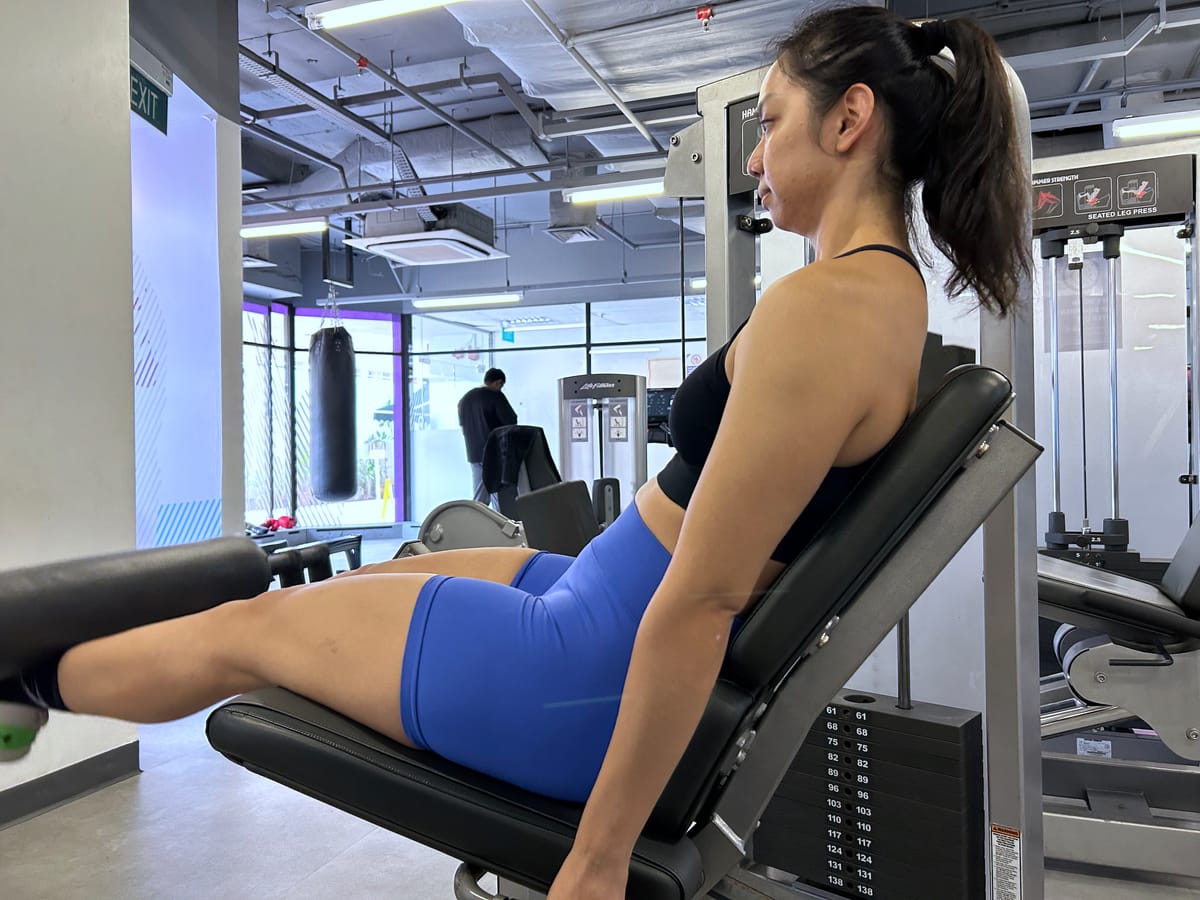
Want to train quads? Squats. Want a good leg exercise? Squats.
Leg extensions, on the other hand, are the less sexy, less glamorous option. (Wait … is that why leg extension machines are always tucked away in a corner?)
Now, what if leg extensions are WAY better for your quads than they look?
Leg extension vs squat
OK, let’s cut the BS.
While you can go much heavier on the squats, it’s not the most “all-rounded” quads exercise. But the leg extension is.
Here’s why.
Why is leg extension more “all-rounded”?
It all comes down to how one quad muscle behaves differently in a squat and in a leg extension.
Read on, we promise it’s super simplified.
Key difference: rectus femoris
There are 4 quad muscles*:
- Vastus lateralis (largest and strongest)
- Vastus medialis
- Vastus intermedius
- Rectus femoris
*There’s technically a 5th quad muscle, the tensor of the vastus intermedius, but that’s irrelevant here.
OK, we know you want a picture of the quad muscles (even if you’re just going to scroll past):
Here’s the unique part: the rectus femoris crosses both the hip and knee joints. In comparison, the other 3 only cross the knee joint.
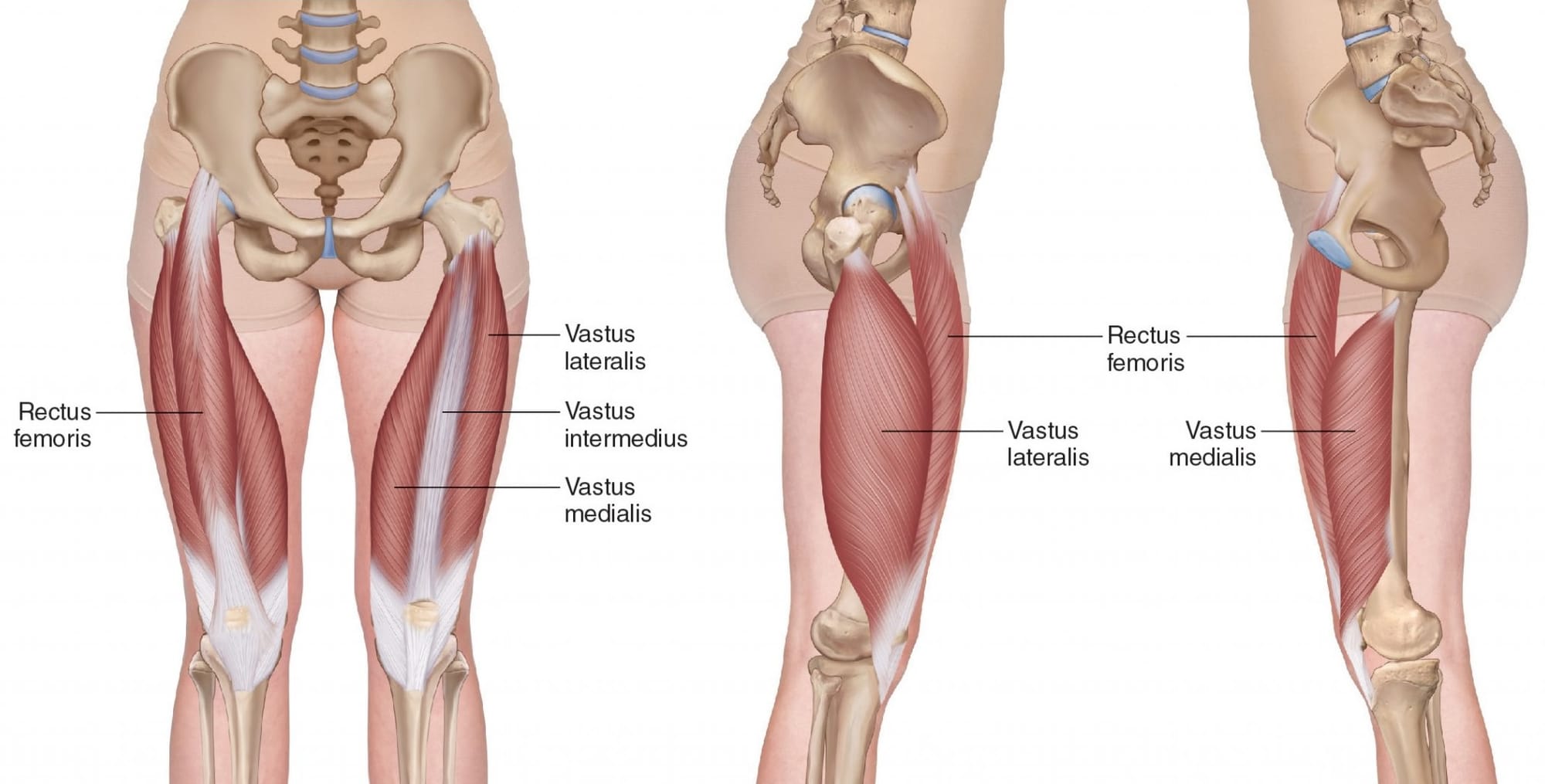
This means only the rectus femoris can move differently at both ends.
What happens to the rectus femoris in a squat?
As you move up in a squat, 2 things happen in the rectus femoris:
- Shortens at the knee joint end (to extend the knee)
- Lengthens at the hip joint end (to extend the hip)
Here’s the trouble: these are opposing forces happening at the same time. Think of it as a tug of war in the rectus femoris.
OK, surely that’s no big deal, right? Well … research suggests that it is.
Rectus femoris can’t be targeted with squats
In a squat, the rectus femoris experiences very low muscle activity, unlike the other quad muscles which are all heavily involved.
The rectus femoris simply isn’t contributing much to the movement, which means it can’t be trained effectively in a squat.
Another study backs this up by suggesting that the rectus femoris doesn’t experience any muscle growth through squats.
This limitation likely also extends to other squat-like exercises — such as leg press, lunge, and split squat.
So, which quad muscles are you training with squats? Mainly the vastus medialis and vastus lateralis.
Leg extension targets the rectus femoris
Leg extension does what the squat cannot: target the rectus femoris effectively.
During leg extensions, you remain seated — which means your hips stay in a fixed position throughout. You no longer have to worry about the rectus femoris lengthening at the hip joints, like it would in a squat.
Simply put, no more tug of war. This lets the rectus femoris focus on shortening!
What’s more, the leg extension lets you focus on the top position where the quads are most shortened — and where it’s the toughest.
Best of all, the leg extension targets all your quad muscles. This is what makes it a better all-rounder than squats for training quads.
Practical application for training quads
So, does this mean you should only do leg extensions? No.
Because, remember? Rectus femoris isn’t the only quad muscle you have. There’s still the vastus muscles, which are better targeted by squats.
Want more exercises for targeting your quads?:
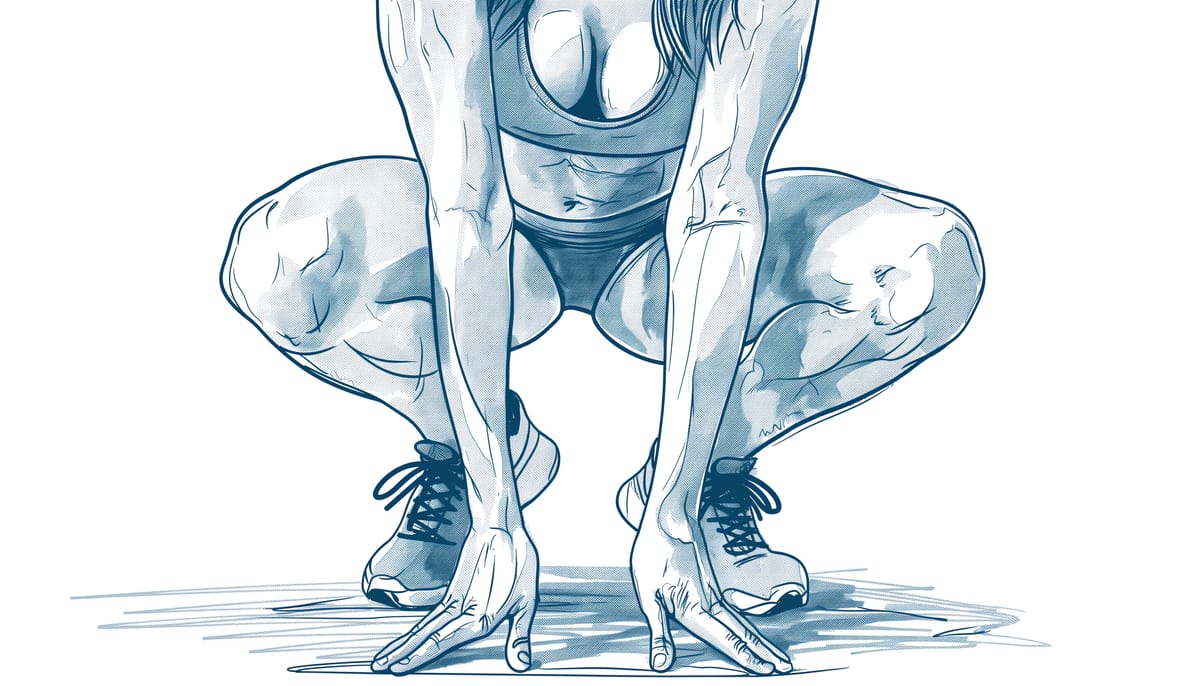
Do both leg extension and squat
Want to train all parts of your quads well?
The smart, practical approach is to include both squat (vastus muscles) and leg extension (rectus femoris) in your training.
In practice, it might be a good idea to start with the squat (or similar exercises for that matter) since it’s more physically and technically demanding. You want to be at your freshest for that.
Leg extensions can be done later in your workouts.
@carla.leclercq Bulking so it’s gonna be lots of quad flexes from now on
♬ nonstop remix . sty - sty
Now, go build yourself some beautiful quads!
Alternatives to leg extension
Thankfully, the leg extension machine is available in most commercial gyms (even though they’re often tucked away in a corner).
But in the unfortunate event you can’t get your legs on one, there are just not many good alternatives to the leg extension.
The key criteria here? Exercises that don’t extend the hips and knees at the same time.
That said, here are 2 that just might help.
Sissy squat
The sissy squat keeps the hip angle relatively constant throughout. You have 2 options here: the machine and the free weight version.
Sissy squat machine
This exercise is not a common one so it’s often butchered, especially for those doing it for the first time.
Here’s how you want to use the sissy squat machine:
What you want is to keep your torso upright throughout the exercise — rather than lean forward like in a typical back squat.
Don’t have the sissy squat machine? Here are some workarounds:
@thecasss #legsworkout #legday #sissysquat #smithmachine #resistanceband #quads ♬ Kids - Jerry Folk
Sissy squat (free weight)
Compared to the machine option, this version of the sissy squat looks more badass allows for an even greater amount of knee flexion.
This lets you emphasize the stretch in your quads even further.
That said, the free weight sissy squat has a higher requirement for technique, strength, and ankle mobility so go through the necessary progression.
Bodyweight sissy squat:
@kimfrench87_ Ain’t nothing sissy about these 🔥 #sissysquat #quads #fyp ♬ I'm No Magician - Vincent & Love, Alexa
Everything you need to know about the sissy squat is here:
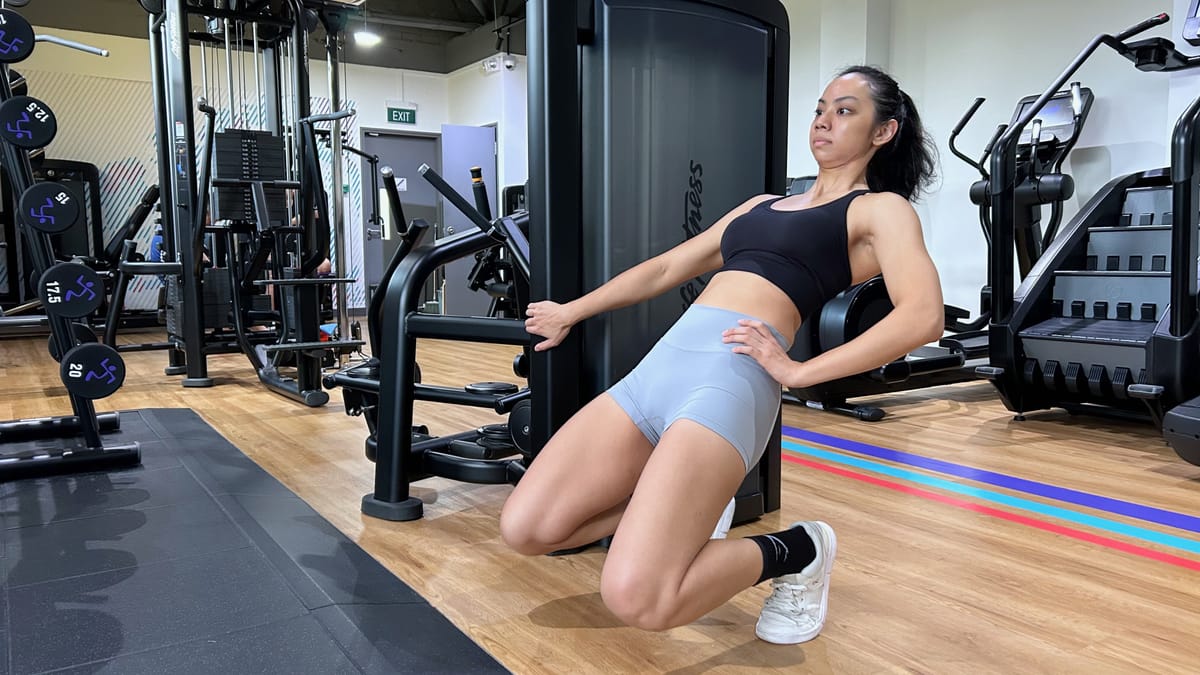
Reverse Nordic curl
Similar to the sissy squat, the reverse Nordic curl keeps the hip angle constant.
Don’t write off the reverse Nordic curl just because it’s typically done with body weight. Try it once — and you’ll know what we’re talking about.
The generous range of motion is key here.
In case you’re still unconvinced, the reverse Nordic curl could even have some advantages over leg extension.
This video has everything you want to know about the reverse Nordic curl:
Take it slow with this exercise at the start. You want to make sure you’re able to control the movement comfortably.
Too damn strong? You can do reverse Nordic curls with a weight plate for added resistance.





